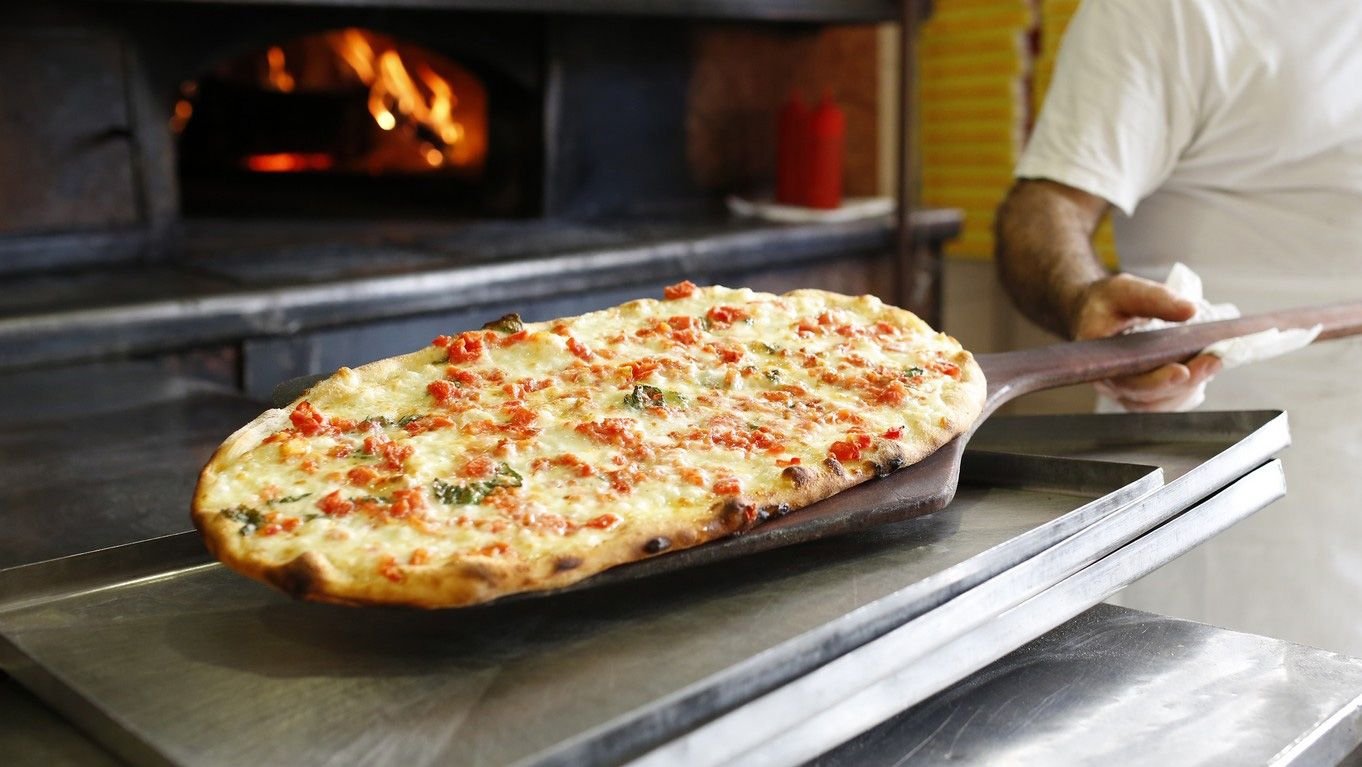Cheese holds a central role in Italian pizza, contributing not only to its flavor and texture but also embodying centuries-old culinary traditions. This article explores why cheese is indispensable in Italian pizza-making, highlighting its historical significance, regional variations, and essential role in creating the perfect slice of pizza.

Historical Significance and Evolution
Pizza, as it’s known today, originated in Naples, Italy, during the late 18th century. Initially a simple street food enjoyed by the working class, pizza quickly gained popularity and evolved into a symbol of Italian cuisine. Cheese became an integral part of pizza-making as pizzaiolos experimented with various combinations to enhance the flavor and texture of their creations.
Key Cheeses Used in Italian Pizza
1. Mozzarella
Fresh Mozzarella (Mozzarella di Bufala or Fior di Latte):
- Origin: Mozzarella di Bufala comes from water buffalo milk in Campania, Italy, while Fior di Latte is made from cow’s milk. Both are known for their creamy texture and mild, slightly tangy flavor.
- Characteristics: Fresh mozzarella melts beautifully when baked, forming a creamy layer that blends harmoniously with tomato sauce and basil in classic pizzas like Margherita. It’s renowned for its stretchy, stringy consistency, which adds to the pizza’s appeal.
2. Parmigiano-Reggiano
- Origin: Parmigiano-Reggiano, often referred to as Parmesan, originates from Emilia-Romagna and is aged for at least 12 months, developing a granular texture and nutty, savory flavor.
- Characteristics: Grated Parmesan is a common topping for pizzas, adding a sharp, salty kick that complements rich tomato sauces and robust toppings. Its umami-rich profile enhances the overall depth of flavor in Italian pizzas.
3. Pecorino Romano
- Origin: Pecorino Romano is made from sheep’s milk and originates from Sardinia and Lazio, Italy. It’s aged for several months, resulting in a sharp, salty flavor profile.
- Characteristics: Grated Pecorino Romano is used similarly to Parmesan, adding a bold flavor that pairs well with pizzas featuring spicy or savory ingredients. Its distinctive tanginess adds complexity to the pizza’s taste.
Culinary Significance of Cheese in Italian Pizza
Flavor Enhancement:
Cheese in Italian pizza serves as a flavor enhancer, balancing the acidity of tomato sauce with its creamy, salty, or tangy notes. Each cheese variety brings a unique profile that complements specific pizza styles and toppings, creating a harmonious blend of flavors.
Textural Contribution:
Cheese also contributes to the textural appeal of pizza. Fresh mozzarella melts into a creamy layer, while aged cheeses like Parmesan and Pecorino Romano add a satisfying crunch when sprinkled on top. The combination of melted and grated cheeses enhances the overall mouthfeel, making each bite a delightful experience.
Cultural Identity:
Italian pizza is deeply rooted in regional traditions, and cheese plays a crucial role in defining these culinary identities. From the fresh mozzarella in Naples’ Margherita to the robust Pecorino Romano in Sicilian pizzas, cheese reflects the terroir and craftsmanship of each region, ensuring authenticity and cultural pride.
Regional Variations and Adaptations
Italian pizzas vary significantly across regions, each showcasing unique cheese preferences and combinations:
- Naples (Neapolitan Pizza): Known for using fresh buffalo mozzarella (Mozzarella di Bufala) in Margherita and Marinara pizzas, emphasizing simplicity and quality of ingredients.
- Rome (Roman Pizza): Prefers Fior di Latte mozzarella for its even melting properties, often paired with artichokes, prosciutto, or fresh vegetables.
- Sicily (Sicilian Pizza): Combines grated Pecorino Romano with other cheeses like ricotta or fresh mozzarella, highlighting seafood and Mediterranean flavors.
Why Cheese Matters in Homemade Italian Pizza
When preparing Italian pizza at home, selecting the right cheese ensures an authentic and flavorful experience:
- Quality: Opt for cheeses labeled with PDO (Protected Designation of Origin) or DOP (Denominazione di Origine Protetta) to guarantee authenticity and superior taste.
- Versatility: Experiment with different cheese combinations to suit personal preferences and enhance the pizza’s overall flavor profile.
- Tradition: Respect traditional methods and ingredients to capture the essence of Italian pizza-making, from dough preparation to cheese selection and baking techniques.
Conclusion
Cheese is not merely a topping but a cornerstone of Italian pizza-making, enhancing flavor, texture, and cultural identity in every slice. From the creamy melt of fresh mozzarella to the sharp bite of Parmigiano-Reggiano and Pecorino Romano, each cheese variety contributes to the rich tapestry of flavors that define pizzas across Italy’s diverse regions. By understanding the importance of cheese in Italian pizza and embracing traditional methods and ingredients, pizza enthusiasts can recreate the authentic taste of Italy’s beloved dish, ensuring a culinary experience that celebrates centuries of tradition and craftsmanship.











